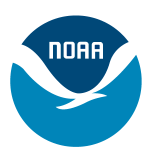- Industry: Government
- Number of terms: 30456
- Number of blossaries: 0
- Company Profile:
NOAA Coral Reef Conservation Program, National Oceanic and Atmospheric Administration, U.S. Department of Commerce
Underground water that is generally found in the pore space of rocks or sediments and that can be collected with wells, tunnels, or drainage galleries, or that flows naturally to the earth's surface via seeps or springs. The term is not applied to water that is percolating or held in the top layers of the soil, but to that water in the zone of saturation below the water table.
Industry:Natural environment
A coral disease characterised by complete coral tissue degradation of Caribbean acroporid corals.-Two species of Acroporidae are affected, the elkhorn coral, Acropora palmata, and the staghorn coral, A. Cervicornis. The disease exhibits a sharp demarcation between apparently healthy coral tissue and exposed coral skeleton.- These signs are identical to plague, except that white band is acroporid specific (and plague has not been found on acroporids).- Tissue loss usually proceeds- from the base of the colony branch to the tip, although it can begin in the middle of a branch in A. Cervicornis. White band disease affects acroporid corals throughout the Caribbean and has decimated populations at a regional scale.The infective agent has not yet been isolated. For more information and illustrations, see: http://www.coral.noaa.gov/coral_disease/white_band.shtml.
Industry:Natural environment
A haploid spore in the red algae life cycle which is the meiotic product of the tetrasporangium of a diploid tetrasporophyte. The tetraspores are released, settle, and grow into gametophytes.
Industry:Natural environment
A network of uniformly spaced parallel lines intersecting at right angles. When superimposed on a map, it usually carries the name of the projection used for the map. For example: Lambert grid, transverse Mercator grid, and universal transverse Mercator grid.
Industry:Natural environment
A technique used to provide a general description of large areas of reef and to gauge broad changes in abundance and distribution of organisms on coral reefs. The technique, widely used in Australia, involves towing a snorkel diver (observer) at a constant speed behind a boat. The observer holds on to a 'manta board' attached to a small boat by a 17-meter length of rope. This person makes a visual assessment of specific variables during each manta tow (2 minutes duration), and records these data when the boat stops, on a data sheet attached to the manta board. The manta tow technique is used to provide a general description of large areas of reef and to gauge broad changes in abundance and distribution of organisms on coral reefs. The advantage of manta tow over other survey techniques is that it enables large areas of reefs to be surveyed quickly and with minimal equipment.
Industry:Natural environment
An area in the littoral zone that retains sea water at a low tide because of a depression or arrangement of rocky substrate.
Industry:Natural environment
Any dive within a certain time frame after a previous dive. Some dive tables consider any dive within 12 hours of a previous dive as repetitive.
Industry:Natural environment
Describes coral colonies with horizontal interlocking branches and short upright branches.
Industry:Natural environment
